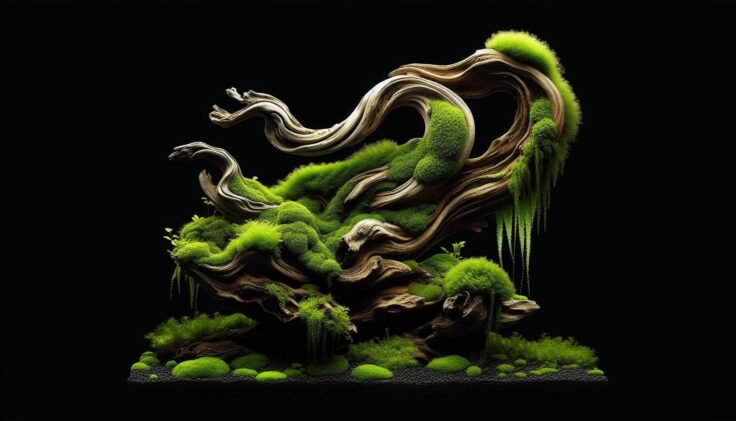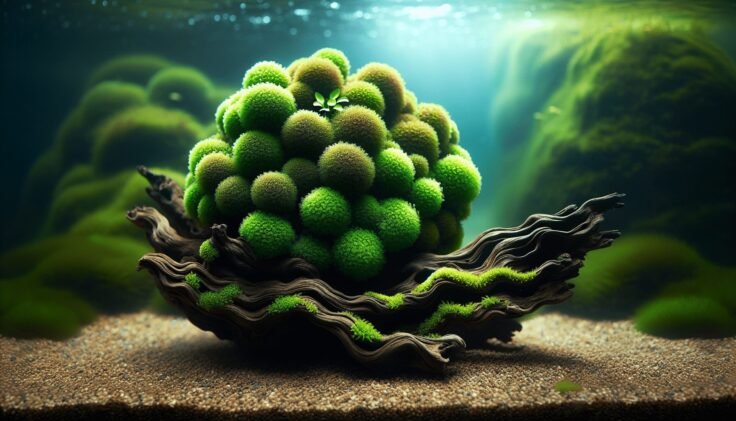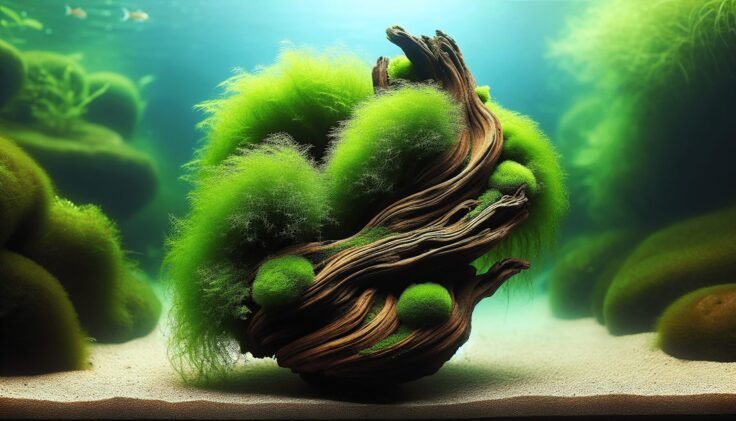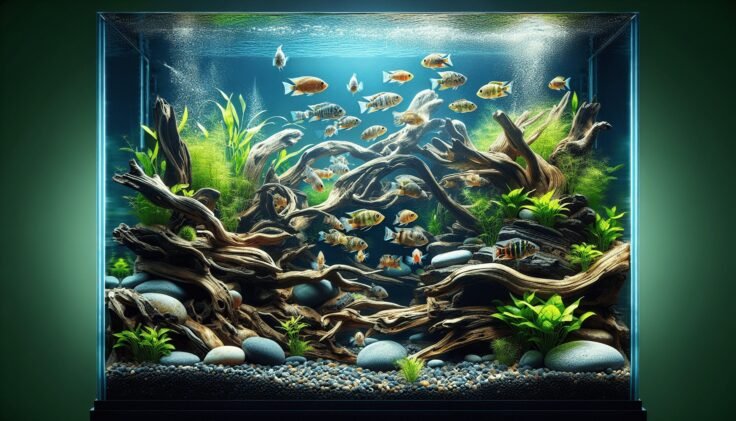Have you ever considered bringing a slice of aquatic nature into your home, but space constraints held you back? A driftwood nano tank might just be the perfect solution for you. These compact aquariums, combined with the natural aesthetic of driftwood, can transform any living space into a tranquil oasis. They offer a unique opportunity to observe a miniature ecosystem right on your desk or shelf. Let’s dive into the world of driftwood nano tanks and see how you can get started with crafting your own little piece of underwater scenery.
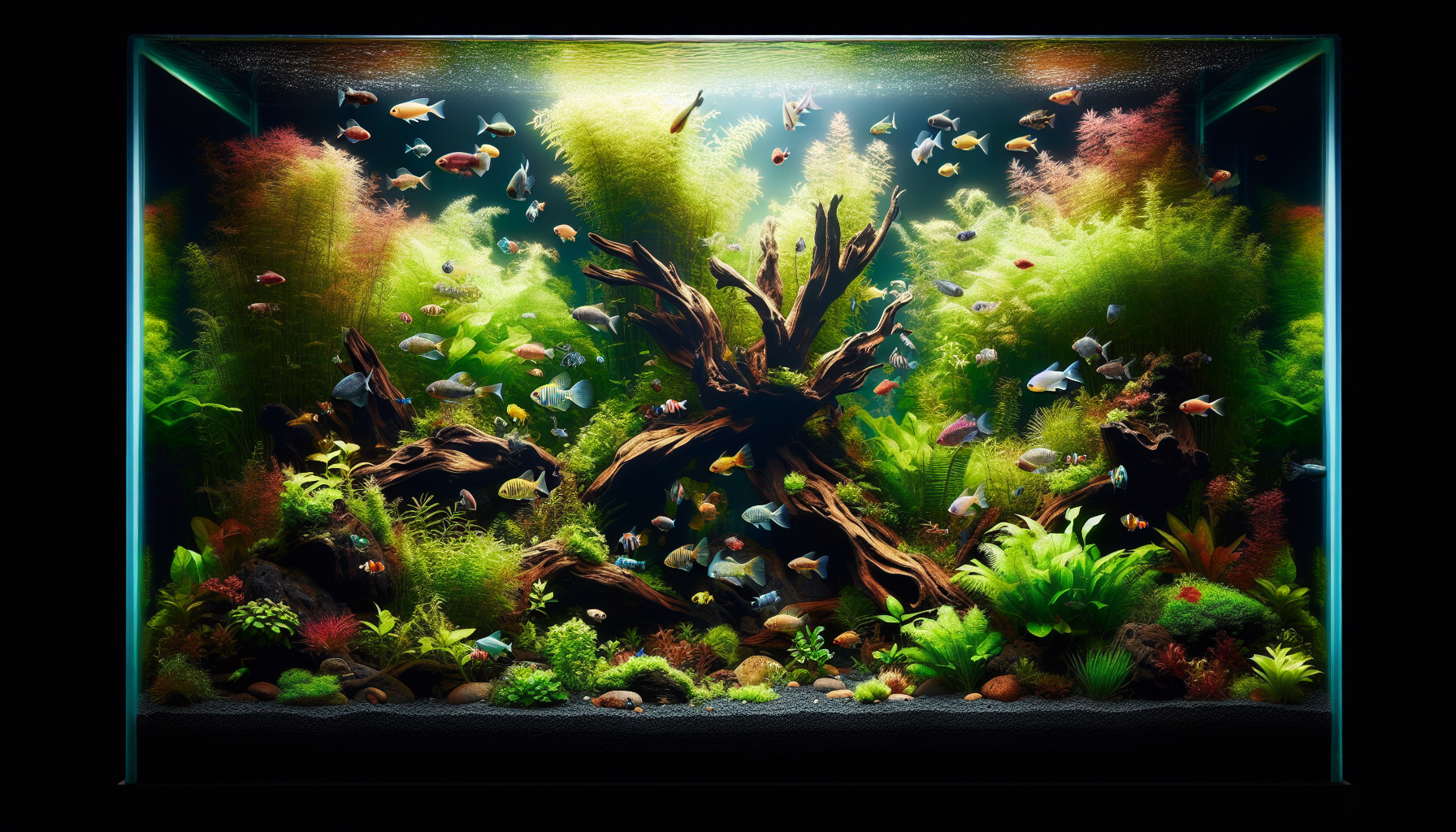
Understanding Driftwood Nano Tanks
What is a Driftwood Nano Tank?
A driftwood nano tank is essentially a small-scale aquarium, typically under 10 gallons, which utilizes driftwood as a central design feature. The driftwood not only serves as a stunning decorative piece but also provides a natural habitat for aquatic life. Its organic texture contrasts beautifully with aquatic plants and creatures, creating a dynamic scene that’s both calming and visually captivating.
Why Choose a Nano Tank with Driftwood?
You might wonder why using driftwood in a nano tank is such a popular choice. The appeal lies in its aesthetic and functional properties. Driftwood adds a natural, rustic charm that mimics underwater scenes you might find in nature. It also provides a habitat and hiding places for fish and shrimps, and can serve as a substrate for certain plants. Additionally, it may help in maintaining water chemistry by releasing beneficial tannins, which can slightly lower pH and mimic soft water environments many aquatic species thrive in.
Selecting Your Driftwood
Types of Driftwood Suitable for Nano Tanks
Choosing the right type of driftwood is crucial for creating an effective and visually appealing nano tank. Here’s a table to help you understand the most popular types:
| Type of Driftwood | Characteristics | Considerations |
|---|---|---|
| Malaysian Driftwood | Dense, sinks easily, dark color | Can significantly lower pH |
| Mopani Wood | Two-tone appearance, smooth | Tends to release tannins |
| Cholla Wood | Hollow, unique shapes | Decays over time, good for shrimp tanks |
| Spider Wood | Unique, branchy structures | May require soaking to sink |
Each type of wood provides different benefits and aesthetics, so you’ll want to select based on the specific needs of your tank and aquatic life preferences.
Preparing Driftwood for Your Nano Tank
Before adding driftwood to your tank, it must be prepared to ensure it doesn’t adversely affect the water quality. Start by thoroughly cleaning any dirt or debris off the wood. Soaking is critical; it helps waterlog the wood, making it sink, and leaches out tannins that can color the water. Depending on the type and size of driftwood, soaking may take several weeks. Boiling the driftwood can speed up this process and also sterilize it.
Setting Up Your Nano Tank
Choosing the Right Aquarium
The first step in setting up your driftwood nano tank is selecting the appropriate aquarium. Consider where you plan to place the tank and how much space you have available. Nano tanks come in various shapes—regular rectangular, cube, or even modern styles like bowfronts. Your choice should accommodate your space and aesthetic preferences while leaving room for equipment and decor.
Essential Equipment
While nano tanks are smaller, they still require the right equipment to maintain a healthy environment. Some essential pieces include:
- Filter: Look for low-flow options, such as sponge filters, to avoid disturbing the delicate balance in the tank.
- Heater: Necessary if you plan to keep tropical species; a small adjustable heater typically suffices.
- Lighting: LED lights are popular for their energy efficiency and ability to support plant growth.
- Substrate: The base layer of your tank should be chosen based on the species and plants you plan to keep.
Water Parameters to Consider
Understanding and maintaining the right water parameters are key to keeping your aquatic life healthy. Regularly test for:
- Temperature: Ensure consistency based on species needs, typically between 72°F and 82°F.
- pH Level: Driftwood can alter pH, usually lowering it; most nano tank species prefer slightly acidic conditions.
- Ammonia, Nitrite, and Nitrate Levels: A properly cycled tank should have zero ammonia and nitrites, with low nitrates.
Arranging Your Driftwood and Decor
When placing your driftwood and decorating your nano tank, aim for a natural, balanced look. Start by positioning the driftwood as a focal point. Consider different angles and orientations to find the most appealing layout. Complement the driftwood with rocks, small plants, or other aquatic decor. This offers hiding spots for shy habitants and creates depth and interest in the layout.
Choosing Inhabitants for Your Nano Tank
Fish Options for Nano Tanks
Given the small size, not all fish are suitable for nano tanks. Here are some species you might consider:
| Fish Type | Size Range | Ideal Conditions |
|---|---|---|
| Betta Fish | Up to 3 inches | Calm waters, warm temperature |
| Neon Tetras | Up to 1.5 inches | Schooling fish, slightly acidic water |
| Shrimp | Various species | Peaceful, clean water |
| Dwarf Corydoras | Up to 2 inches | Prefer cooler water with gentle currents |
When selecting fish, always research their compatibility with each other and the specific water conditions they require.
Adding Aquatic Plants
Aquatic plants are a fantastic addition to your driftwood nano tank, enhancing both the aesthetic and ecological balance. Some beginner-friendly plants include:
- Java Moss: Easily attaches to driftwood, good for beginners.
- Anubias Nana: Low light requirement, grows well attached to driftwood.
- Java Fern: Hardy plant that thrives even in low-light conditions.
Creating a Balanced Ecosystem
To maintain a balanced nano tank ecosystem, you must strike a harmonious balance between fish, plants, and other elements. Avoid overcrowding the tank, as small volumes of water can be difficult to maintain. Regular monitoring and adjustments of water parameters, plant maintenance, and observing the health of your fish will help sustain your mini aquatic world.
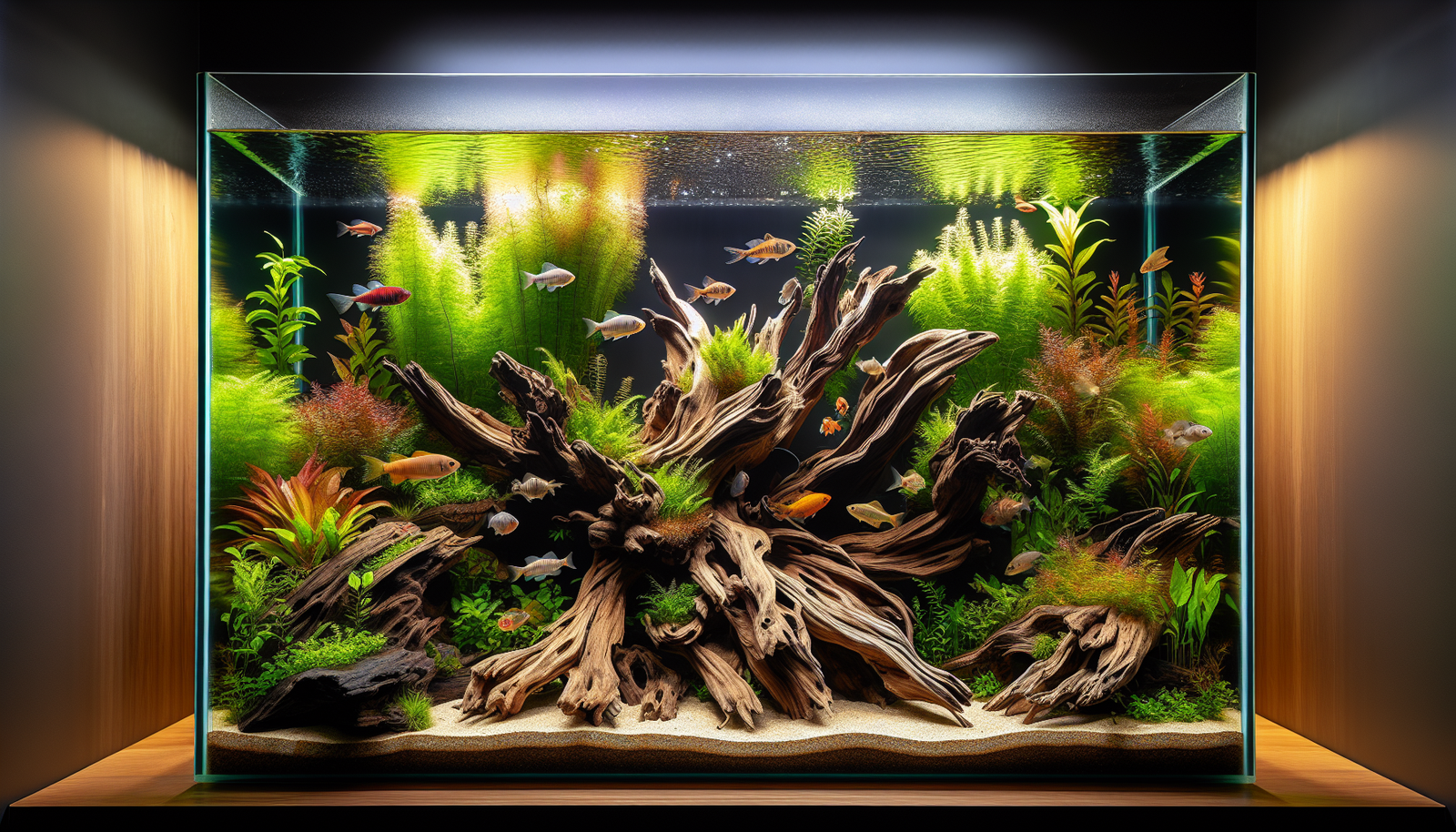
Maintenance and Care Tips
Regular Cleaning Routine
A regular maintenance schedule is paramount for the health of your nano tank. This involves:
- Weekly Partial Water Changes: Replacing 10-20% of the water helps keep conditions stable.
- Filter Maintenance: Ensure filters are clean to maintain effective water flow and filtration.
- Substrate Vacuuming: Remove detritus and uneaten food from the substrate to prevent ammonia spikes.
Monitoring Tank Health
Keeping track of your tank’s health is ongoing. Use water test kits to regularly check ammonia, nitrite, nitrate, and pH levels. Visually inspect fish and plants for signs of stress or illness, such as faded colors or unusual behavior, and respond promptly to any issues.
Handling Common Issues
Issues can arise even in a well-maintained tank. Some common problems include:
- Algae Blooms: Often caused by excessive nutrients or lighting; manage with reduced light exposure and regular clean-up.
- Ich or Other Diseases: Isolate affected fish and treat with appropriate aquarium medications.
- Ammonia Spikes: Could indicate overfeeding or inadequate filtration; conduct water changes and re-evaluate feeding schedules.
Enhancing Your Driftwood Nano Tank
To further enhance your nano tank, consider occasional changes such as introducing new plants or rearranging decor elements. This keeps the environment stimulating for both you and your aquatic inhabitants. Additionally, experimenting with different types of aquatic mosses or small flowering plants can add pops of color and variety.
The Joy of Driftwood Nano Tanks
Setting up a driftwood nano tank is more than just a hobby; it’s a journey into creating and maintaining your own micro-ecosystem. It offers the opportunity to observe the intricate interactions between aquatic life and to experience the satisfaction of cultivating a beautiful, living art piece. Whether you’re a beginner or a seasoned aquarist, the joy and tranquility a driftwood nano tank brings are unmatched. So, why not give it a try and let a tiny aquatic world flourish in your space?
